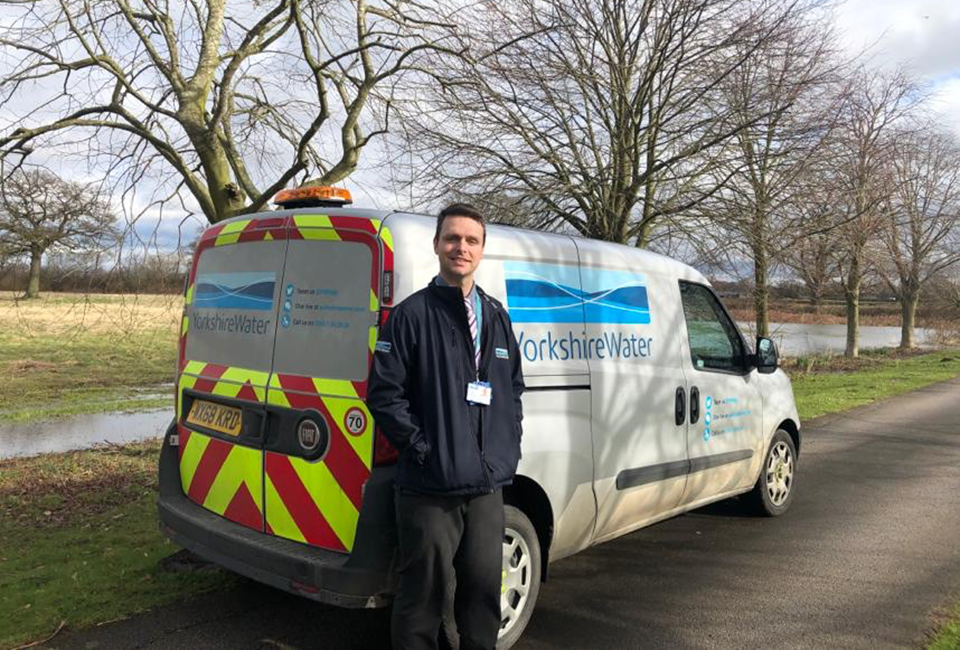A Day in the Life of a Water Regulations Inspector

3/11/2020
After a weekend of working on the new house knocking down walls, fitting compliant taps in my new kitchen during the day and THEN keeping my one-year old daughter entertained by dancing to ‘Baby Shark’ and ‘Heads, Shoulders, Knees and Toes’ in the evening, it’s soon enough Monday and I head off to my role as a Water Regulation Inspector at Yorkshire Water.
My name is Gary Fitzpatrick and I’ve been with the Water Regulations department just over two years now. The Water Supply (Water Fittings) Regulations 1999, previously called “The Water Byelaws” are legislation that governs the design and installation of plumbing systems to safeguard Public Health, and Water Undertakers are legally obliged to enforce them. They aim to prevent contamination of the drinking water supply, as well as misuse or waste of water, erroneous or fraudulent measurement and undue consumption. The Regulations categorise fluids by risk, from 1 to 5. Fluid category 1 is the delicious, wholesome water that comes out of our taps, whereas 5 is fluid that represent a serious health hazard. The Regulations prescribe the level of backflow protection required depending on the fluid category that is identified during my inspection. This is to prevent any fluid going back in to the drinking water supply.
I usually start my day by reviewing the jobs I’ve got for that day. I usually have 3-4 sites depending on the size of the business that’s going to be inspected. I’m given information about the type of business, location and what type of plumbing system the building might have e.g. mains water, bore hole, and if the business has a reduced pressure zone (RPZ) valve on site. I start travelling to site on Advantex, put the post code into my sat nav and away I go!
When pulling in to the first site I’m looking for the entrance of the building to identify a safe place to park, and whether I can see anyone who could be expecting me. As it’s an unfamiliar site at this stage, I’m also looking for potential hazards. For example, if I’m inspecting a farm, I’m looking for big, scary dogs that always seem to want to eat me and the rest of the inspectors. Even though I’ll be escorted around the site, I’m considered to be lone working, so I use the lone worker app to register an alert.
I’ll enter the site and meet the person in charge and introduce myself. “Hello, It’s Gary from Yorkshire Water. I’m here to carry out a water regulation inspection of the building’s plumbing system”. The response from the customer is usually, “The water meter is over there”.
After going on to explain what the Water Regulations are, what the inspection will entail and that I need to have a look at the whole plumbing system, I’ll then have a chat with the customer about any potential hazards on site and capture these on a Point of Work Risk Assessment (PoWRA). We’ll then set off around the following the plumbing system and assessing for compliance. I’ll ask lots of questions like “What do you use that tap for? Do you attach a hose to this? What goes in that washing machine?”.
When I’ve inspected all water use on the site (this can take a long time at bigger sites!), I’ll discuss any contraventions that I’ve identified with the customer and explain that a report will be sent out over the next week. The report will give details of the contravention, with various options that can be implemented to achieve compliance; this allows the customer to choose a solution that best suits their needs.
As you can probably imagine, not all customers are pleased to hear that their plumbing system doesn’t comply with legislation and that work will need to be done to bring it up to scratch. This is when my skills in influencing and diplomacy are really tested! It’s my job to make sure the customer fully understands the importance of complying with the Regulations – after all, any contamination will likely affect their drinking water supply in the first instance! It’s also worth noting that failure to comply with the legislation is a criminal offence, and that Yorkshire Water has pursued successful prosecutions against several businesses in the past.
When the report is sent to the customer it will also advise them of my revisit date, usually about 5-6 weeks after my original inspection. I’ll go back and check that all required work has been carried out correctly and can be signed off. If I find that no work has been done, or it has been done incorrectly, I’ll usually issue a legal notice called a section 75. This notice is pursuant to Section 75 of The Water Industry Act 1991 and it gives the customer a set period to comply with the terms of the notice. If it is not adhered to it gives YW the power to enter the premises and complete the work ourselves, recovering any reasonably incurred expenses from the customer. I’ll go back again after the Section 75 notice has expired and hopefully the work has been done. If it’s still outstanding and non-compliant, the case is escalated to our legal team who support our enforcement of the Regulations.
Carrying out these inspections helps to reduce the risk of the mains water becoming contaminated by high risk businesses such as hospitals, chemical plants or agricultural sites. In 2018, the team completed 3500 inspections, identifying and resolving over 2000 high risk defects. We also support investigations into Water Quality incidents and manage proactive communication and engagement programmes to educate installers and consumers about the Regulations.
If you think that your team would benefit from learning more about the Water Supply (Water Fittings) Regulations 1999, please contact waterregulations@yorkshirewater.co.uk.
